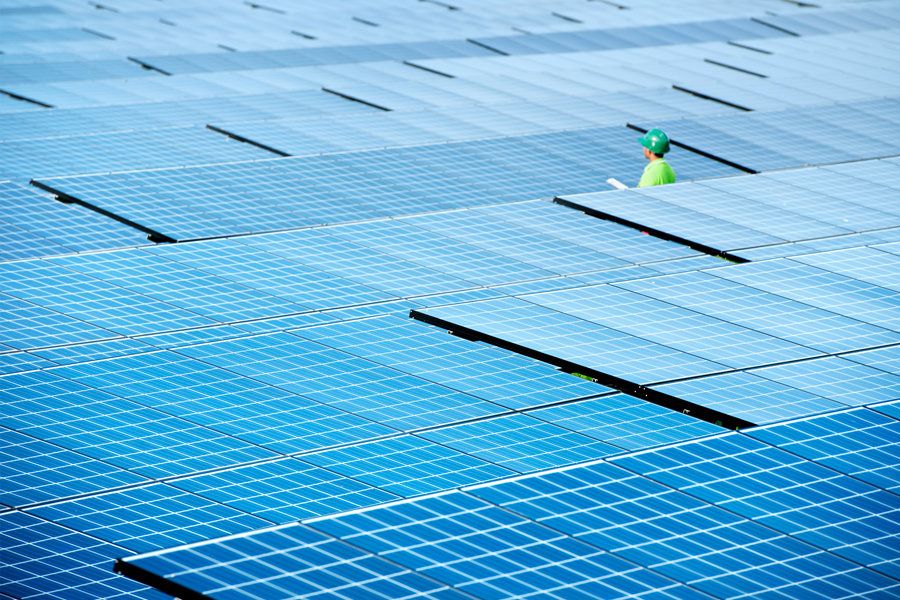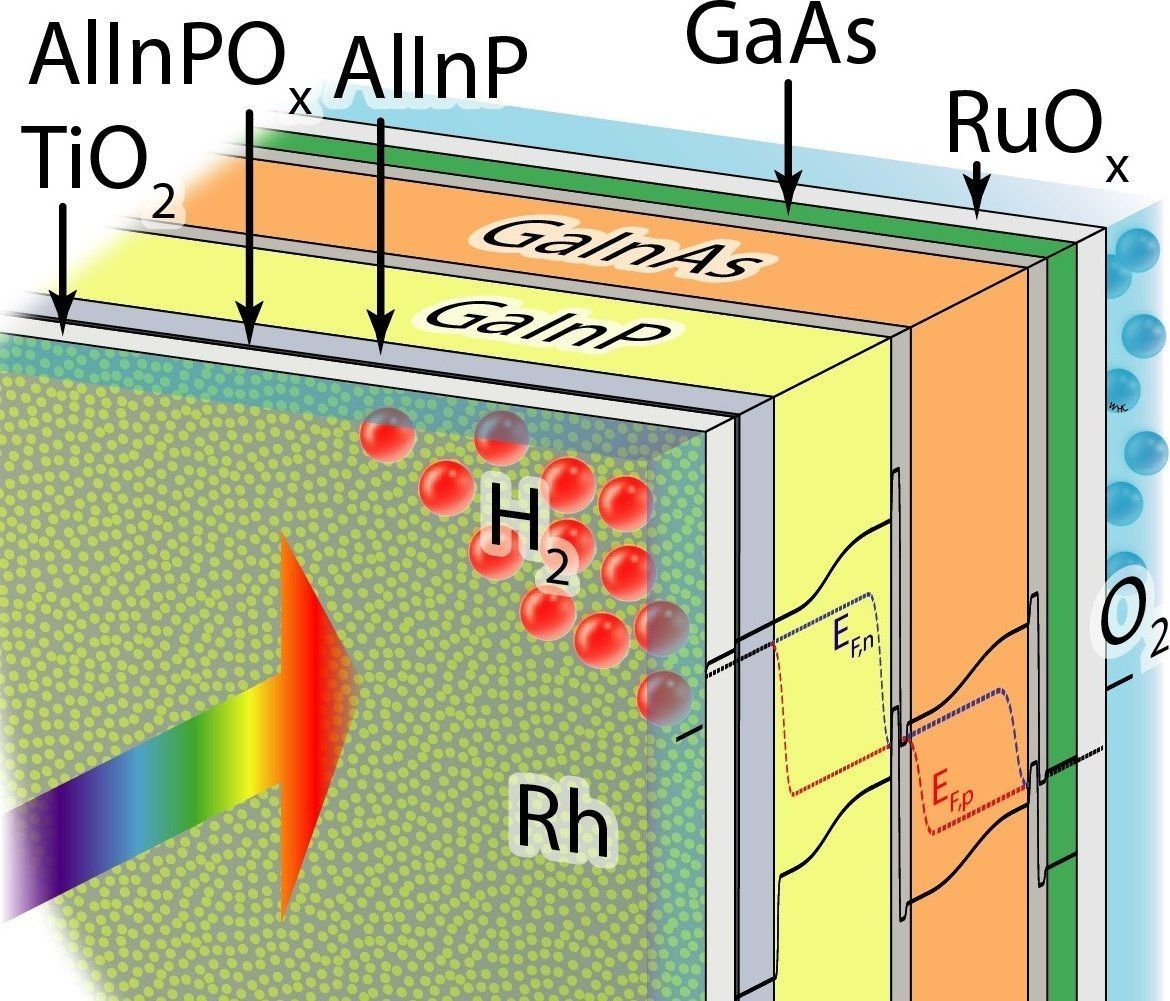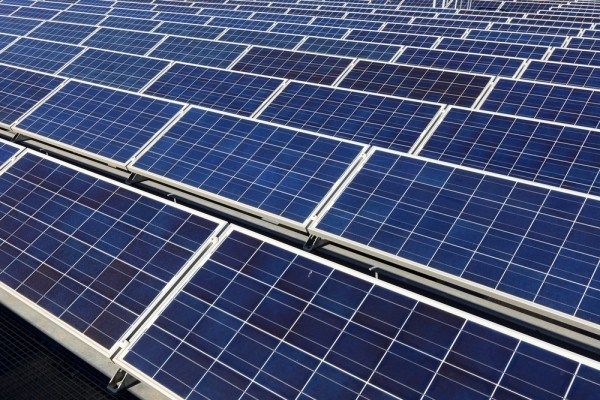A dream of advocates of low cost space access has been beam propulsion of various types, whether laser, microwave, or particle beams.



It wasn’t that long ago that solar power and wind power were labeled as marginal, ‘green’ electricity, but in the last five years or so they have become much more affordable and economically more feasible than conventional sources like coal and nuclear.
What supported solar along the way partly was the emergence of energy storage in the form of battery systems. Electricity can now be made by solar power systems and the excess can be stored for usage at night or on less sunny days. At least, solar power has been paired successfully with energy storage, and it is catching up with solar power. The cost of this newish technology is dropping, “The overall estimated cost fell 32% in 2015 and 2016, according to the 2017 GTM Reseach utility-scale storage report. That will slow over the next five years, GTM reported. But battery storage is — in certain places and applications — on its way to cost-competitiveness.”
According to Lazard, it could drop another 36% between 2018 and 2022. The UC-Berkeley research study, “Energy Storage Deployment and Innovation for the Clean Energy Transition,” predicted lithium-ion batteries could hit the $100 per kilowatt-hour mark in 2018.

The U.S. electric system is adapting to a new wave of distributed energy resources, such as solar panels and energy storage. Some of these work together in localized networks known as microgrids—nearly 2,000 are now operating or planned across the country, according to one estimate.
Prized for their flexibility, microgrids can run in an “island” mode or connect to the main grid. Although microgrids can potentially enhance reliability, the current electric system needs upgrading in order to synchronize with them properly.
Researchers at the U.S. Department of Energy’s (DOE) Argonne National Laboratory study the impact of microgrids and analyze ways to assimilate them smoothly within the larger electric system. Part of this work focuses on the distribution system—the last leg of electricity’s journey from energy source to outlet.

The nuclear power sector is seeing a resurgence in innovation, supported by new policies and emerging technologies. The general public and various governments are starting to grasp the value of nuclear power as an alternative, sustainable energy source. Unlike renewables, such as wind and solar power, nuclear energy is not dependent on weather conditions for power generation, having a capacity factor of over 90 percent. Nuclear power is also more eco-friendly than natural gas and coal and its “carbon-free” attributes are seen as critical in the fight against climate change.
For decades, advancements in the nuclear power sector have been incremental and focused largely on making systems “walk away safe.” Today, the industry is pushing the boundaries and exploring applications for nuclear power in ways that have never before been considered.
BWXT is at the forefront of this nuclear renaissance. This 6,000-employee company operates on the model of letting capital drive strategy. BWXT is constantly evaluating new ways to ensure workers, funding, and policies are utilized in the most effective way possible. The company also analyzes the needs of numerous other industries to determine how nuclear power could provide innovative solutions.

John Bucknell created the pre-conceptual design for the SpaceX Raptor engine. It will be the advanced full-flow staged combustion rocket engine for the SpaceX BFR. He designed and built the subscale Raptor rocket for proof of concept testing able to test eighty-one configurations of main injector.
John Bucknell says the nuclear turbo rocket technology and his designs are ready for development. The air-breathing nuclear thermal rocket will enable 7 times more payload fraction to be delivered to low-earth orbit and it will have 6 times the ISP (rocket fuel efficiency) as chemical rockets. The rocket will have two to three times the speed and performance of chemical rockets for missions outside of the atmosphere.
The fully reusable nuclear rocket will be a single stage to orbit system which will be able to make space-based solar power several times cheaper than coal power. Using the 11-meter diameter version of this rocket to build space-based solar power will enable solar power at less than 2 cents per kilowatt-hour.

Hydrogen will play a central role as a storage medium in sustainable energy systems. An international team of researchers has now succeeded in raising the efficiency of producing hydrogen from direct solar water-splitting to a record 19 percent. They did so by combining a tandem solar cell of III-V semiconductors with a catalyst of rhodium nanoparticles and a crystalline titanium dioxide coating. Teams from the California Institute of Technology, the University of Cambridge, Technische Universität Ilmenau, and the Fraunhofer Institute for Solar Energy Systems ISE participated in the development work. One part of the experiments took place at the Institute for Solar Fuels in the Helmholtz-Zentrum Berlin.
Photovoltaics are a mainstay of renewable-energy supply systems, and sunlight is abundantly available worldwide – but not around the clock. One solution for dealing with this fluctuating power generation is to store sunlight in the form of chemical energy, specifically by using sunlight to produce hydrogen. This is because hydrogen can be stored easily and safely, and used in many ways – whether in a fuel cell to directly generate electricity and heat, or as feedstock for manufacturing combustible fuels. If you combine solar cells with catalysts and additional functional layers to form a “monolithic photoelectrode” as a single block, then splitting water becomes especially simple: the photocathode is immersed in an aqueous medium and when light falls on it, hydrogen is formed on the front side and oxygen on the back.

A new technique has produced the highest performing inverted perovskite solar cell ever recorded. A team of researchers from Peking University and the Universities of Surrey, Oxford and Cambridge detail a new way to reduce an unwanted process called non-radiative recombination, where energy and efficiency is lost in perovskite solar cells.
The team created a technique called Solution-Process Secondary growth (SSG) which increased the voltage of inverted perovskite solar cells by 100 millivolts, reaching a high of 1.21 volts without compromising the quality of the solar cell or the electrical current flowing through a device. They tested the technique on a device which recorded a PCE of 20.9 percent, the highest certified PCE for inverted perovskite solar cells ever recorded.
Researchers are still working towards increasing efficiency and stability, prolonging lifetime and replacing toxic materials with safer ones. Researchers are also looking at the benefits of combining perovskites with other technologies, like silicon for tandem cells.

University of British Columbia researchers have found a cheap, sustainable way to build a solar cell using bacteria that convert light to energy.
Their cell generated a current stronger than any previously recorded from such a device, and worked as efficiently in dim light as in bright light.
This innovation could be a step toward wider adoption of solar power in places like British Columbia and parts of northern Europe where overcast skies are common. With further development, these solar cells—called “biogenic” because they are made of living organisms—could become as efficient as the synthetic cells used in conventional solar panels.

Solar farms in Texas or California are fine, but Kent in England?
Solar farms should be placed in desert regions that have low value for growing food, and relatively low value to nature. Musk plans to install a massive solar farm in nice green Kent, where it is occasionally a little bit sunny. Look at the pics here:
http://www.dailymail.co.uk/news/article-5905675/Elon-Musk-build-worlds-biggest-battery-Britain-400m-solar-panel-plans.html is simply green lunacy.

You can generate electricity from oil, you can produce it from natural gas, you can make it from nuclear energy, and you can channel it from the sun, via solar energy conversion systems. You can even generate electricity from photosynthetic bacteria, also known as cyanobacteria, based on a new innovation developed at the Technion. As published in a study in the journal, Nature Communications, the Technion researchers have developed an energy-producing system that exploits both the photosynthesis and respiratory processes that cyanobacteria undergo, with the harvested energy leveraged to generate electricity based on hydrogen.
The study was conducted by three Technion faculty members: Professor Noam Adir from the Schulich Faculty of Chemistry, Professor Gadi Schuster from the Faculty of Biology, and Professor Avner Rothschild, from the Faculty of Materials Science and Engineering. The work involved collaboration between Dr. Gadiel Saper and Dr. Dan Kallmann, as well as colleagues from Bochum, Germany and the Weizmann Institute of Science. It was supported by various bodies, including the Nancy and Stephen Grand Technion Energy Program (GTEP), the Russell Berrie Nanotechnology Institute (RBNI), the Technion Hydrogen Technologies Research Lab (HTRL), the Adelis Foundation, the Planning and Budgeting Committee’s I-CORE program, the Israel Science Foundation, the USA-Israel Binational Science Fund (BSF) and the German research fund (DFG-DIP).
Scientists have long considered cyanobacteria a possible energy source. Cyanobacteria belong to a family of bacteria common to lakes, seas, and many other habitats. The bacteria use photosynthetic mechanisms that enable them to generate energy from sunlight. They also generate energy in the dark, via respiratory mechanisms based on digestion and degradation of sugar.